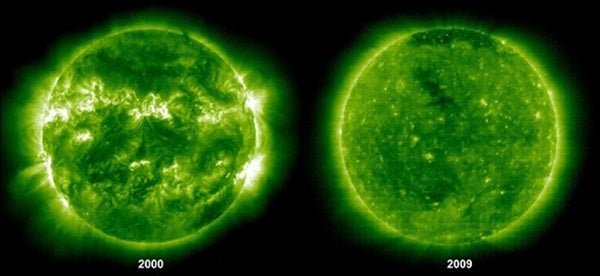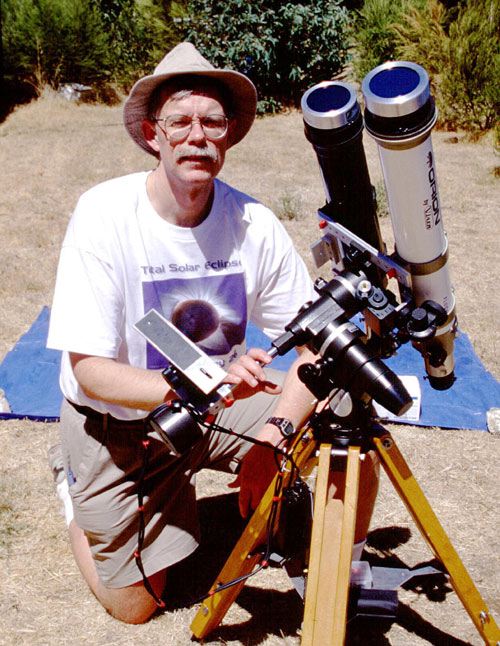Starting in the late 1960s, Olin C. Wilson, working from Mount Wilson Observatory above Pasadena, California, observed about 90 fairly bright stars around the sky to find out if he could detect such changes in activity and possibly even cycles. His part of the project went on for more than a decade before his retirement.
On the Sun, changes in sunspot numbers are associated with the strength of two lines of singly ionized calcium. By measuring changes in them, we can observe both the rotation and the longer-term magnetic cycles on the visible disks of stars.
Wilson took advantage of this effect to measure just the dark cores of the two calcium lines in his sample of stars to see what happened. This resulted in a seminal paper in 1978 that started the entire subject of solar-stellar activity variations. As the subject developed, the broader study of the historical variations in the Sun’s brightness, including the connection between solar activity and climate, and the search for solar twins moved onto the front burner.
His research showed that other stars have activity cycles that range from a few years to indeterminately long. Some stars appear to have no change in activity and are thought to be in dormant states similar to our Sun’s “Maunder minimum,” a dip in solar activity that occur-red in the 17th century. This variety gives us insight into our once and future Sun.
Starting in 1992, Lowell Observatory initiated a project to continue these observations of both the Sun and Wilson’s original stars using our 1.1-meter telescope. Our team has maintained this work up to the present.
Lowell Observatory, Flagstaff, Arizona










